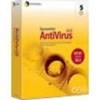Symantec 11281411 Administration Guide - Page 131
Notifying others of an infected email message, Enable Lotus Notes, Microsoft Exchange, Auto-Protect
 |
UPC - 037648327237
View all Symantec 11281411 manuals
Add to My Manuals
Save this manual to your list of manuals |
Page 131 highlights
Scanning for viruses and other threats 131 Configuring scan options 2 In the Client Auto-Protect Options dialog box, on either the Lotus Notes or Microsoft Exchange tab, click Enable Lotus Notes (Microsoft Exchange) Auto-Protect. 3 Click Send e-mail to sender. 4 Click Message. 5 Do one of the following: ■ Click OK to accept the default message. ■ Click Message and customize the text, and then click OK. 6 Click OK until the Client Auto-Protect Options dialog box disappears. Notifying others of an infected email message For supported email software, you can configure Auto-Protect to notify others whenever an email message that contains an infected attachment is opened. Symantec AntiVirus sends an email message to the selected recipients with the following subject: Virus Found in message "[EmailSubject]" The body of the message includes information on the sender of the infected attachment: Symantec AntiVirus found a virus in an attachment from [EmailSender]. For each infected file, the following information is also added to the email message: ■ Name of the file attachment ■ Name of the virus ■ Action taken (such as cleaned, moved to the Quarantine, deleted, or left alone) ■ File status (infected or not infected)















